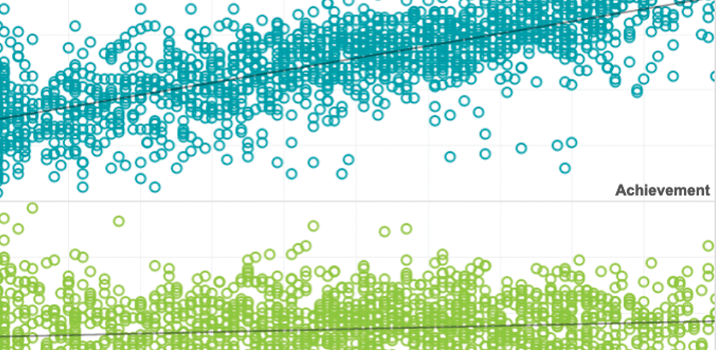Journal article


This manuscript reports results from two studies conducted during the development of KinderTEK, an iPad delivered kindergarten mathematics intervention, to determine the relationship between instructor-reported technology experience and intervention implementation, as measured by student use.
By: Lina Shanley, Mari Strand Cary, Ben Clarke, Meg Guerreiro, Michael Thier


A longitudinal study of reading growth for students with visual impairments
Using data from Northwest Evaluation Association’s Measures of Academic Progress assessment, reading achievement was analyzed from 224 students with visual impairments in grades 3–10, in four states over an eight-year time period.
By: Beth Boroson, Elizabeth Barker, Xueming (Sylvia) Li
Topics: Accessibility, Growth, Reading & language arts


The development of racial/ethnic and socioeconomic achievement gaps during the school years
This study examined developmental trends in academic achievement gaps between poverty and race/ethnicity groups from school entry to middle school using two large longitudinal data sets. We used time-varying effect modeling (TVEM) to estimate how the associations among race/ethnicity, poverty status, and math and reading achievement vary across continuous age from age 5 to age 15.
By: Megan Kuhfeld, Elizabeth Gershoff, Katherine Paschall
Topics: Equity, Growth modeling


In this article, we examined the prevalence of rapid guessing to determine if this behavior varied by grade, subject, and teacher, and evaluated if rapid guessing influenced teacher value-added estimates. We observed differences in rapid guessing across grades, subjects, and teachers; however, this behavior did not appear to have a substantive effect on teacher value-added estimates.
By: Andrew Rice
Topics: School & test engagement, Student growth & accountability policies


This study examines whether test effort differs by student subgroup, including by race and gender. The sensitivity of achievement gap estimates to any differences in test effort is also considered.
By: James Soland
Topics: Equity, School & test engagement


Achievement gaps are a metric of fundamental importance to U.S. practice and policy. Gap estimates are often used to measure the effectiveness and fairness of the education system at a given point in time, over the course of decades, and as children progress through school.
By: James Soland
Topics: Equity, School & test engagement, Student growth & accountability policies


Predicting time to reclassification for English learners: A joint modeling approach
The development of academic English proficiency and the time it takes to reclassify to fluent English proficient status are key issues in English learner (EL) policy. This article develops a shared random effects model (SREM) to estimate English proficiency development and time to reclassification simultaneously, treating student-specific random effects as latent covariates in the time to reclassification model.
By: Tyler Matta, James Soland


